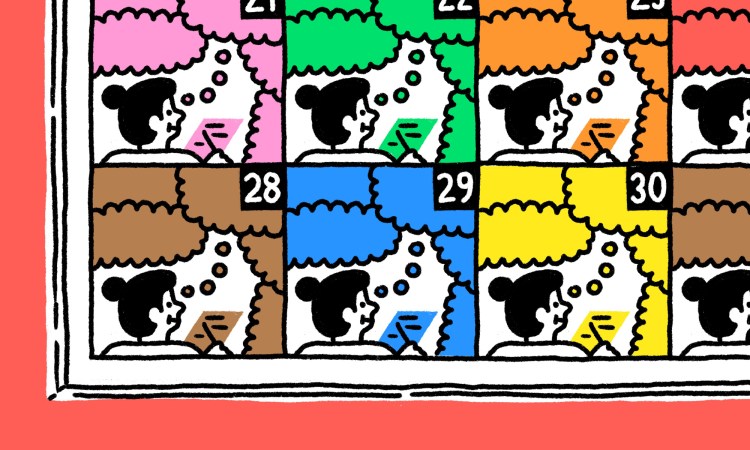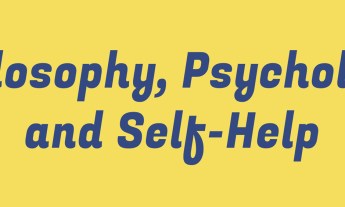
Attention fellow word nerds: Daily haiku-ing fired up my creativity, sweetened my days, brought me closer to others, and more, says TED Ideas Editor Daryl Chen.
This post is part of TED’s “How to Be a Better Human” series, each of which contains a piece of helpful advice from someone in the TED community; browse through all the posts here.
I have two questions for you: “How much can you say in 17 syllables? And how much do you think you could get out of them?”
My answer to both: More than you can imagine.
A few months ago, I watched a TEDxUniMelb talk from Zezan Tam, an Australian entrepreneur and product manager. In it, he spoke about what he’d learned from writing a daily haiku (a 3-line poem, in which the first line has 5 syllables; the second, 7 syllables; the third, 5 syllables). He says, “It started off as a joke. My housemate Andrew had written a haiku to his girlfriend for her birthday and so on his birthday I wrote him one back.”
Tam enjoyed it, so he vowed to write one every day (he appears to have stuck with the practice for a year). In his talk, he says, “They’ve really helped me become a happier and more productive person and a more effective leader.” Wow! And: really??!??
Before I go any further, let me clarify: Much of what Tam wrote was probably not haiku; it was most likely senryu. (***See the note at end of story for more about this distinction.) The same goes for the poems written by me and my colleagues, but for the purposes of simplicity, I will continue to use the word haiku.
Tam noticed that his haiku kept returning to three main themes: gratitude, courage and humility. As an example of the first, here’s his poem about the bliss of his daily cup:
one simple pleasure
a bitter kiss on my lips
good morning coffee
He found the thanks he expressed in his haiku were about the little everyday things that brightened his life, and writing about them ended up improving his overall outlook.
I decided to try a one-week experiment of daily haiku. Seeking support and accountability, I posted a message on our company Slack to ask my colleagues at TED to join me. Feeling like a fifth grader handing out party invitations, I nervously waited to see if anyone would respond. Six people did — Daniella, Emma, Jasmine, Micah, Ted, Sherrel.
I gave them two guidelines: Our haiku should follow the 5-7-5 structure; and we’d try to stick to the general subject of good things in our daily lives.
Here are 6 takeaways from my week of haiku:
1. Haiku turned out to be the perfect creative sandbox
Writing can scare me
But haiku have a defined
Beginning and end
— Micah
My job at TED is as an editor and writer, and I’ve come to regard writing — even though I do love it — as work. And since I knew I was going to write a story about the experiment, a significant part of me regarded the poems as another chore to be dispatched. A much more enjoyable chore than, say, xeroxing but a chore nonetheless.
To my surprise, writing haiku brought me back to something I hadn’t felt for a long time — the sheer, elemental joy of playing with words. I experienced immense pleasure from sifting through the Whitman’s Sampler of my vocabulary and trying out different nouns, adjectives and prepositions. Having to conform to a 5-7-5 scheme made it seem even more like a game.
I also didn’t anticipate how big a sense of accomplishment I’d get from something as small as a haiku. Completing one gave me this daily hit of “Hey, look at what I made!”
2. They helped me not take myself — or my writing — so seriously
Feeling hungry now
What should I nom on for lunch?
I choose spicy pork
— Sherrel
cat ate my haiku
he licked his chops and said, it
could have been much verse
— Daryl
I started out the experiment silently resolving to write “good” haiku — my poems would be profound yet lyrical, meticulously constructed but miraculously unforced, simple yet deep. Pretentious? Yep.
But after I saw Sherrel’s haiku about spicy pork, something inside me unclenched. I realized, “I can write about anything and have fun while I’m doing it.” As a result, most of my haiku are more doggerel and Ogden Nash than the stuff of Zen masters, but I’ve been enjoying myself too much to care.
3. They sweetened my commute
Humid Monday AM
The M train brings cooling air
Until I exit
— Sherrel
oh hi, M T A
want to love you, but it’s so hard
you’re always broken
— Jasmine
I tend to spend my morning subway ride doing one of two things: worrying about the day ahead or the day before, or escaping from said worries into historical mysteries. Both activities end up leaving a faint, not-so-positive residue in my mind. By the time I get to the office, I’m either a swirling mass of to-dos and forgot-to-dos, or a mildly resentful returnee from Victorian England.
I initially decided to write my daily haiku during my commute just to get it done with (see: writing as work). But it ended up being the ideal subway vocation. I’d spend the 30 – 40 minutes thinking up my poem and typing it with one thumb on my phone. It made the ride fly by. And unlike my usual AM activities, I arrived at the office feeling alert and a bit buzzed from wordplay.
4. They connected me to my coworkers in a way that i didn’t expect
Much free food today!
Salads, berries, CARROT CAKE?
don’t mind if I do.
— Daniella
Tried giving coffee
up for a week — just gave in.
ah, sweet, sweet caffeine.
— Ted
My office is probably like many others — it’s filled with smart and kind people, we have quick, friendly chats when we meet, but we spend much of our days facing our individual screens getting our individual tasks done.
Sharing haiku bonded me with my coworkers in a new way. Before this week, I knew some of them well enough to say “hello” but not much else. One of my favorite parts of the experiment was learning about them and their personalities in 17-syllable increments. The 7 of us are on different teams at TED and have very different responsibilities, but I discovered we love many of the same things: dogs on the subway (more later), the sun, coffee, and the free food that periodically appears in the kitchen as if a gift from the gods.
We posted our haiku in a Slack channel. Anytime a new one appeared, I felt like I had received a tiny, precious gift we could unwrap together. The members of our group greeted each haiku with emojis, praise, and praise in the form of emojis, which served as delightful punctuation points to the activity, like the confetti tossed after a wedding. While Slack can sometimes be a source of stressful communications, I knew that any message posted in our channel would bring me nothing but happiness.
5. They made me look out for the bright spots in my days
The rain is falling
It is wet, it is dreary
But it cleans the earth
— Jasmine
Train line suspended
Bus crawls like a snail, oh well
I’ve brought a good book
— Emma
pretty dress, bold lip
old friends, a delicious meal
mondays aren’t so bad.
— Daniella
A confession: I came up with the “small, good things” mandate for the week largely out of convenience. Since I was writing an article about the experiment, I thought it would be simpler if the haiku hewed to a single theme. Out of Tam’s three subjects, I found this the most appealing.
Like so much about the experiment, this decision had unintended positive effects. Searching for material to write about prompted me to notice the passing delights of my mornings — a man playing a kazoo as he walked down the street, a baby’s feet in wee, striped baby socks, how the leaves of neighborhood trees were like a living awning that protected me from a rainshower. My pre-experiment walks to the subway must have been similarly full of such moments but I was usually too distracted (see: worrying) to pay attention.
6. They increased my sightings of dogs on the subway 500 percent
“He is really scared.
Mind if we sit next to you?”
Two dogs on the train
— Emma
beagle on 1 train
silk flaps of ears wave at me
as the subway shakes
— Daryl
The day our experiment began, my coworker Micah and I spoke about how much we enjoyed it whenever we happened upon a dog riding the subway with their human. Since I started to haiku, I’ve seen a dog on the MTA almost every day.
And if haiku = more subway dogs, well, I have many more encounters in my future because I’ve decided to continue writing a daily haiku — I’ve liked it that much. And all 6 of my coworkers said they wanted to keep doing it.
To conclude the week, I threw out these questions to the group: “Would you recommend a daily haiku to other people? Who do you think would benefit from it?”
Yes — to anyone
Who wants to see small joys and
Stitch them together
— Micah
“I would definitely recommend this exercise to other people, especially and honestly to people like me who might struggle with anxiety, depression, or staying present. It was a very therapeutic process that helped me be mindful. Also, it’s fun!” –Daniella
“I would recommend this to everyone! I want to do a week with my seven-year-old daughter to see what she comes up with.” — Jasmine
“I’d recommend this to anyone who might feel busy or whose schedules feel hectic and overwhelming. This exercise forces you to pause during the day and take a deep breath, both literally and figuratively. In a sense, it’s almost like mindfulness in action.” — Ted
“I would definitely recommend this for anyone who is looking to become more in touch with living in the present or who simply wants to add a new experience to their days.” — Sherrel
“I would recommend it to any writers or artists who are looking for inspiration as the process really helps solidify what sparks joy or meaning on a day-to-day basis. That is, for me at least, a magical source of inspiration. I’d also recommend it to anyone who might be feeling down and needs a reminder as to what is meaningful in their life. Sometimes you don’t realize something brings you joy until you sit down and reflect on the small moments.” — Emma
It seems only fitting to end with a poem. I’ll close with these words from my coworker Ted, written in honor of our re-committing to haiku.
I love this channel,
more than most. This is it, y’all.
It’s the Haiku Crew.
***Note: According to the Akita International Haiku Network, “haiku is a form of Japanese poetry, consisting of 17 morae (or on), in three metrical phrases of 5, 7 and 5 morae respectively. Haiku typically contain a kigo, or seasonal reference, and a kireji, or verbal caesura (cutting word) … Most haiku writers prefer poems that refer to nature and social events, but some of them don’t always place an exacting seasonal word in the poem … Currently the majority of haiku are written in 11 short syllables in a 3-5-3 format.”
Senryu, on the other hand, is “similar to haiku in construction: three lines with 17 or fewer morae (or on) in total. However, senryu tend to be about human foibles while haiku tend to be about nature, and senryu are often cynical or darkly humorous while haiku are more serious. Unlike haiku, senryu do not include a kireji or verbal caesura (cutting word), and do not generally include a kigo, or seasonal word.”
Watch Zezan Tam’s TEDxUniMelb talk:











